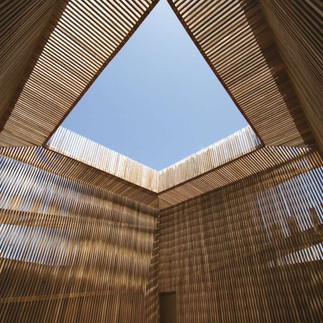Happy New Year! Always in search of inspiration, we are exploring the use of white and neutral colors as a canvas or backdrop for pops of vibrant color. Not only do muted colors exude a sense of calm, the play of light and shadow is exaggerated, and the intensity and color of the sunlight throughout the day transforms the hue and saturation of the walls and paving in dramatic fashion. Here's to a bright and colorful new year!
Projects include Cap de Barbaria Villa by LUV Studio, Casa Grande by Lado Blanco Arquitecturas, Casa Maiora by Studio Andrew Trotter, Parque Natural Huentitan by SPRB Arquitectos, Grotta e Carrubo by Margherita Rui, and pool mosaic by Pierre Mesguich













































































